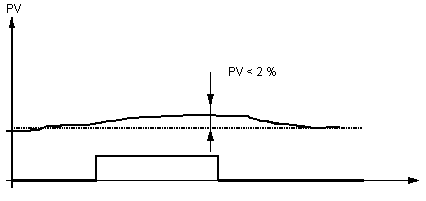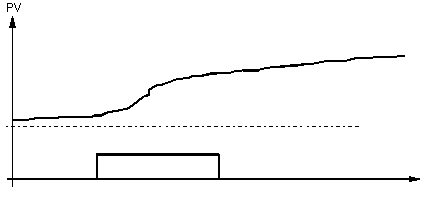The following bits of the diagnostic word (diag element) show the reason for terminating the autotuning:
|
Bit
|
Meaning
|
|
|
1 = Modification of parameters during tuning
|
|
|
1 = Terminated due to system error
|
|
|
1 = Process value saturated
|
|
|
1 = Ascent too small
|
|
|
1 = Illogical reaction
|
Bit 3 of the
diag element
If the parameters tmax or step_ampl are modified during the tuning, the operation will be cancelled.
Bit 4 of the
diag element
The autotuning will be cancelled if the PLC experiences a system error that prevents the completion of the chain. For example, the function will automatically stop should a voltage return occur.
Bit 5 of the
diag element
If the measurement exceeds the range (pv_inf, pv_sup), then the autotuning will be cancelled, and the regulator set to the previous operating mode. Estimating the future measurements enables the autotuning to stop before the range is exceeded (if a first model has been identified).
Bit 6 of the
diag element
This picture shows the behavior when the ascent is too small:
The amplitude of the actuating pulse is too small too influence the process. In this case, the value of step_ampl can be increased.
Bit 8 of the
diag element
This picture shows the behavior during an illogical reaction.
The reaction of the control process is incomprehensible (gain factors with various signs). This can be due to a larger disturbance, coupling with other servo-loops or some other reason.

